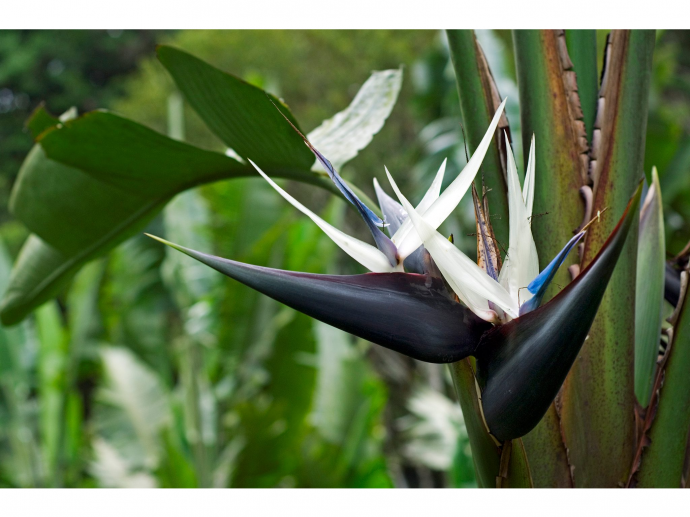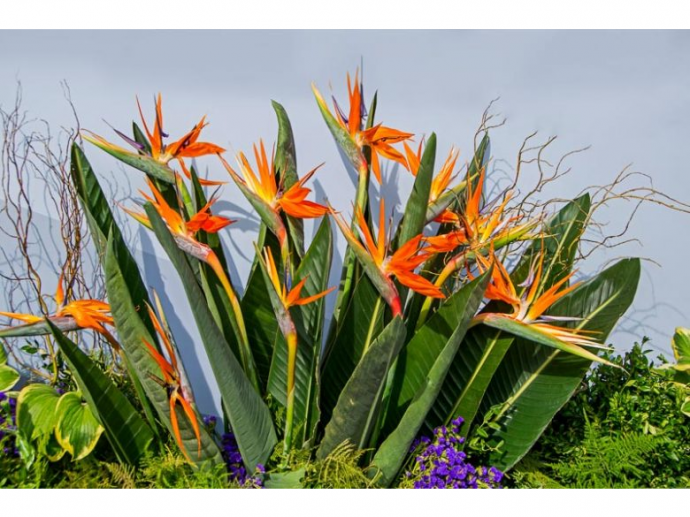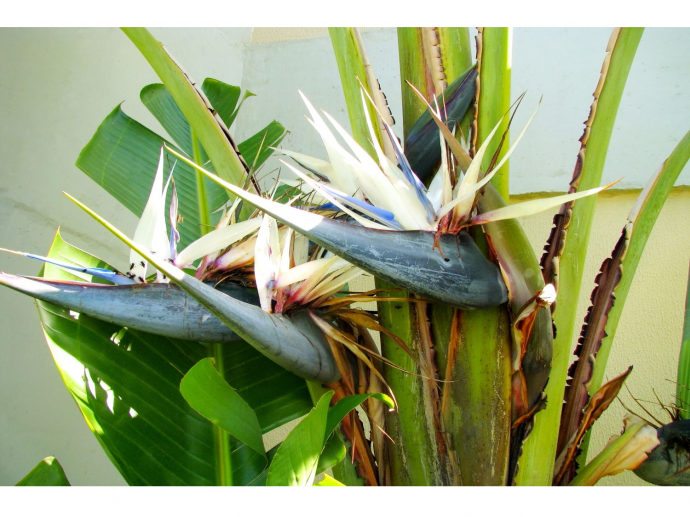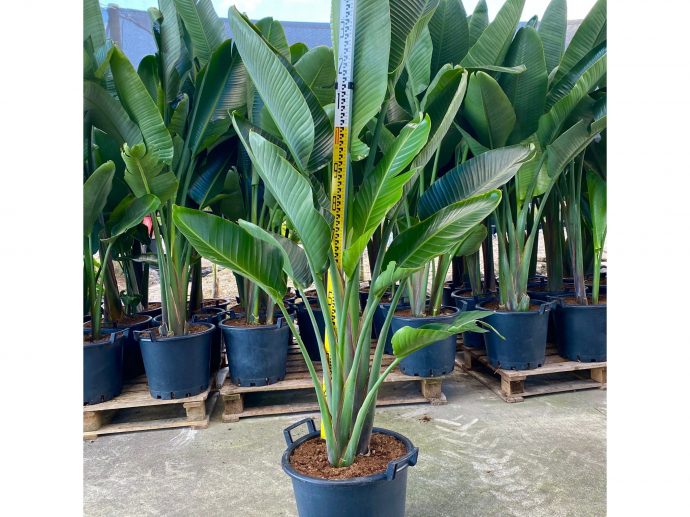Categories more
- Adventures (16)
- Arts / Collectables (15)
- Automotive (37)
- Aviation (10)
- Bath, Body, & Health (75)
- Children (6)
- Cigars / Spirits (30)
- Cuisine (16)
- Design/Architecture (19)
- Electronics (12)
- Entertainment (4)
- Event Planning (3)
- Fashion (44)
- Finance (9)
- Gifts / Misc (6)
- Home Decor (44)
- Jewelry (39)
- Pets (3)
- Philanthropy (1)
- Real Estate (12)
- Services (22)
- Sports / Golf (14)
- Vacation / Travel (60)
- Watches / Pens (14)
- Wines / Vines (24)
- Yachting / Boating (15)
White Bird of Paradise: Care, Types, Benefits & Gardening Tips
Published
01/09/2025Lawn plants are essential to improve the environment and appearance of outdoor areas. They help reduce soil erosion, promote water infiltration, and regulate temperature by providing a cooling effect. Their presence can also boost mental well-being, reduce stress, and improve the quality of life for those who enjoy them.
The White Bird of Paradise is a beautiful tropical plant native to South Africa. It is known for its large, banana-like leaves and vibrant, bird-like flowers, resembling the more colorful Bird of Paradise. Because of its unique appearance and relatively low-maintenance nature, it is popular for indoor and outdoor gardening.
Growcycle offers a variety of indoor plants to help gardeners keep their spaces green and vibrant and make the area attractive.
Botanical Description
The White Bird of Paradise is an exciting, decorative plant that can grow up to 20-30 feet tall in its natural habitat. However, indoors, it usually reaches 6-10 feet. Its long, upright, paddle-shaped leaves give the plant a fan-shaped appearance.
The most unique feature of the White Bird of Paradise is its flowers. Their white petals and blue tongue-like structure, folded in a beak-shaped bract, give them the appearance of a bird in flight. Even though they are less common indoors, the flowers are stunning in outdoor gardens because they receive enough light and space to flourish.
Types of White Bird of Paradise
This plant is a part of the Strelitzia genus, which consists of five main species. Here are the types and variations linked with the White Bird of Paradise and its relatives:
1. Giant White Bird of Paradise
This is the White Bird of Paradise, the largest species in the genus. It is characterized by its towering height of up to 30 feet outdoors, large banana-like leaves, bird-shaped flowers with white petals, and a blue tongue-like structure. It is best suited for large outdoor spaces and is often used as a statement plant in tropical and subtropical gardens. It requires plenty of sunlight and space to thrive.
2. White-flowered Wild Banana
It is another species with white flowers, but it is smaller and has narrower leaves. Native to specific regions in South Africa, it is less commonly cultivated than Strelitzia nicolai. Its flowers are less visible than those of the Giant White Bird of Paradise. It thrives in similar conditions but is less common in cultivation.
3. Orange Bird of Paradise
It is a close relative and the most iconic member of the genus. It has vibrant orange and blue flowers, making it smaller and more colorful. It is commonly grown as an ornamental plant indoors and outdoors and rises to a maximum height of 3-5 feet.
4. Narrow-leaved Bird of Paradise
This rare plant's leaves are upright and needle-like rather than broad and banana-like. Although its flowers are similar to those of Strelitzia reginae, its leaves are remarkably different. It is perfect for modern garden designs and green spaces. It needs little care and can tolerate drought.
5. Dwarf White Bird of Paradise
Some of its cultivars or small-size varieties are often available under the name "Dwarf White Bird of Paradise." These plants are ideal for indoor settings because they are raised to remain shorter. Because of their smaller size, they are easier to handle indoors. Although smaller, they still have rare white flowers and large leaves.
Benefits of the White Bird of Paradise
This plant offers numerous benefits, such as:
- Aesthetic Appeal: Because of its attractive leaves and distinctive flowers, the plant is a main attraction in any garden, house, or workplace. It can turn any area into a haven and add a touch of tropical beauty.
- Air Purification: Like many houseplants, it improves indoor air quality by filtering toxins and releasing oxygen, creating a healthier living environment.
- Stress Reduction: It can reduce stress and improve mood. Its lush greenery and exotic appearance can create a calming atmosphere.
- Privacy and Shade: When grown outdoors, its large leaves can provide shade and a natural screen for privacy in gardens or patios.
- Durability: The plant’s resilience and adaptability make it suitable for various environments, including urban settings, where it can tolerate moderate pollution.
- Wildlife Attraction: The flowers attract birds and pollinators outdoors, contributing to local biodiversity.
How to Care for the White Bird of Paradise
Proper care is essential to ensure the White Bird of Paradise thrives indoors or outdoors. Below are key care guidelines:
1. Lighting
When grown indoors, the plant should be in a location with bright, indirect sunlight. It can tolerate some direct morning sunlight but should avoid harsh afternoon rays, which can harm the leaves.
In outdoor conditions, it thrives in full sun to partial shade. If planted in a garden, ensure it gets at least 4-6 hours of direct sunlight daily.
2. Watering
Water frequently to keep the soil wet but not completely flooded. Allow the top two inches of soil to dry between irrigations. Excessive water can damage the roots, so ensure the pot or soil has good drainage.
3. Soil
Use a soil mixture that drains well. A mix of potting soil, sand, and perlite is ideal for pot plants. Add organic matter to the soil for outdoor germination to improve nutrient availability.
4. Temperature and Humidity
Warm temperatures between 65°F and 85°F are ideal for the plant. It should be brought indoors in colder climates because it is not frost-tolerant. The perfect humidity is high. If growing indoors, consider spraying the plant occasionally or using a humidifier.
5. Fertilization
Throughout the growing season, fertilize the plant with a water-soluble, balanced fertilizer every four to six weeks.
6. Pruning
Remove dead or damaged leaves to maintain the plant’s appearance and health. Trim old flowers to encourage new growth.
7. Repotting
Replant every 2-3 years or when the plant grows out of its container. Use a container slightly larger than the present to allow for future growth.
8. Pest Control
Check the plant frequently for parasites like mealybugs, scale, and spider mites. Use neem extract or insect-repellent soap to eliminate pests.
FAQs
Can the White Bird of Paradise be pruned?
To preserve the health and appearance of the plant, trim any dead or damaged leaves. To prevent harming the plant, use clean and sharp scissors.
How long does it take to grow a mature White Bird of Paradise?
The plant grows relatively slowly and may take 3-5 years to mature and flower, mainly if grown from seeds.
Is the White Bird of Paradise toxic to pets?
If eaten, the plant is toxic to cats and dogs. Its flowers, leaves, and seeds contain substances that can cause nausea, vomiting, and other symptoms in pets. Keep it out of reach of animals.
The Bottom Line
The White Bird of Paradise is a magnificent plant that combines visual appeal with practical benefits. It is a favorite among plant lovers and landscapers. With proper care, it can thrive for years and become a centerpiece in any indoor or outdoor setting.
Visit Growcycle to purchase the excellent White Bird of Paradise. Its striking beauty, air-purifying, and stress-reducing qualities make it a great addition to any plant collection.


















